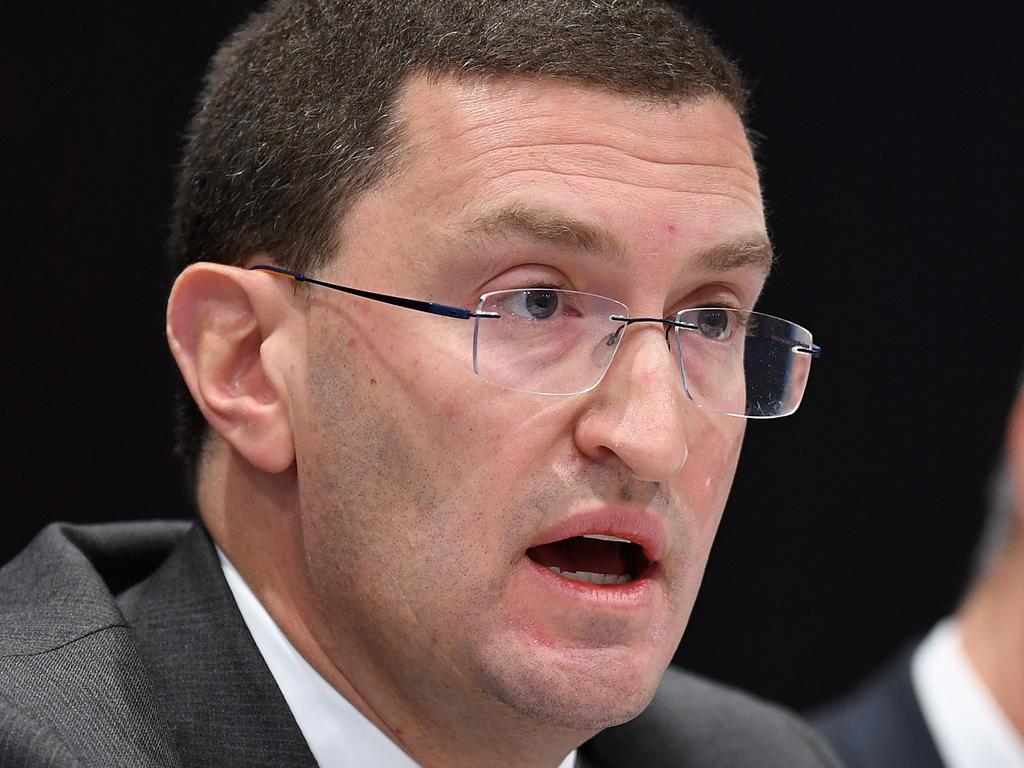Families fill gap left by absent skilled migrants
A plunge in skilled migration has allowed the federal government to increase the number of family visas issued to their highest level in at least a decade.
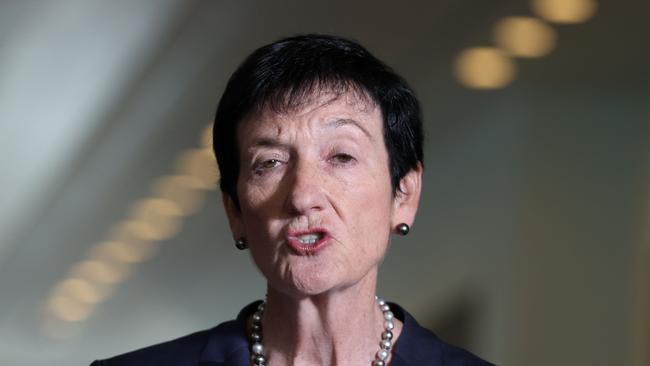
A plunge in skilled migration brought on by pandemic travel restrictions has allowed the federal government to increase the number of family visas issued to their highest level in at least a decade.
Official figures obtained by The Australian show the Covid-19 pandemic pushed the number of skilled visas to 79,620 last financial year, down from 70 per cent of the nation’s total permanent migration program the year before to just over 50 per cent.
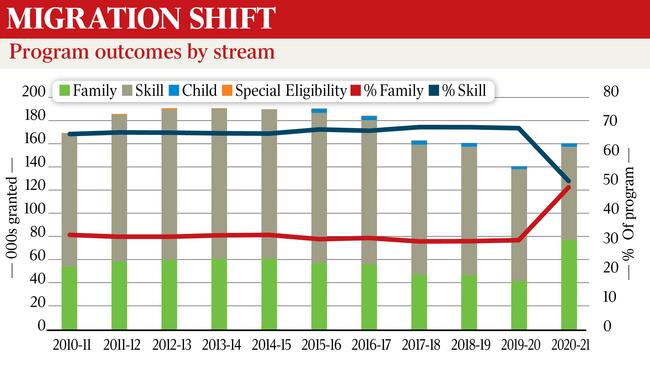
That was offset by a rapid rise in family visas, from 41,961 in 2019-20 to 77,372 last year, now accounting for 49.3 per cent of all permanent migration.
The Australian Chamber of Commerce and Industry’s Jenny Lambert said this steep fall in skilled migration numbers, coming on top of several years of significant decline, “was doing damage to our economy”.
“We are really seeing it play out in labour and skills shortages. Lockdowns have seen the loss of economic activity across the country but as things pick up, the skills shortages we are left with will be acutely felt,” she said.
Business Council of Australia chief executive Jennifer Westacott said international border closures were costing the economy $1.3bn a week and many Australian businesses were unable to source talent required to succeed.
“Getting the right skills is make or break for some big, job-creating projects,” Ms Westacott said.
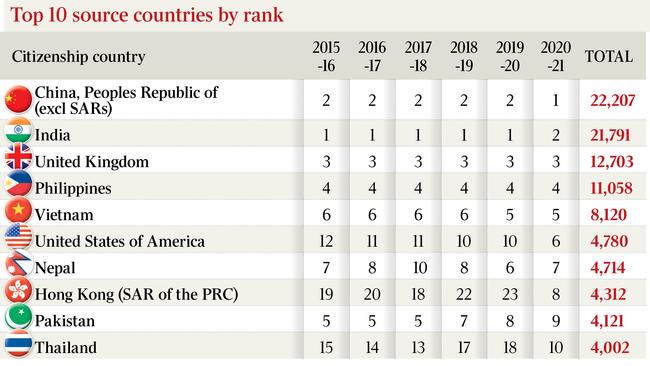
“(Border closures) make it difficult to find skills in critical areas like cyber security, construction or the resources sector.
“As the vaccine protects more people, returning Australians get home and borders open up, we’ll need to refocus our immigration system on skills to make sure bottlenecks and shortages don’t hold up our recovery.”
Overall, there were 160,000 in Australia’s permanent migrant intake in the last financial year, up 20,000 from 2019-20, the Department of Home Affairs Migration Report 2020-21 says.
China became the top country for permanent migrants in 2020-21 for the first time since at least 2015, overtaking India.
Hong Kong soared up the rankings from 23 to eight.
Immigration Minister Alex Hawke told The Australian that reaching the government’s permanent migration target was a strong achievement “given the difficult circumstances this year”.
“Delivering a full program of 160,052 places meant drawing on the pool of onshore applicants due to global Covid-19 restrictions,” he said. “The government’s migration target will remain at 160,000 this year, with visa categories adjusted to help the economic recovery.
“We will continue to give priority to skilled visas that drive economic growth, job creation and investment in Australia.”
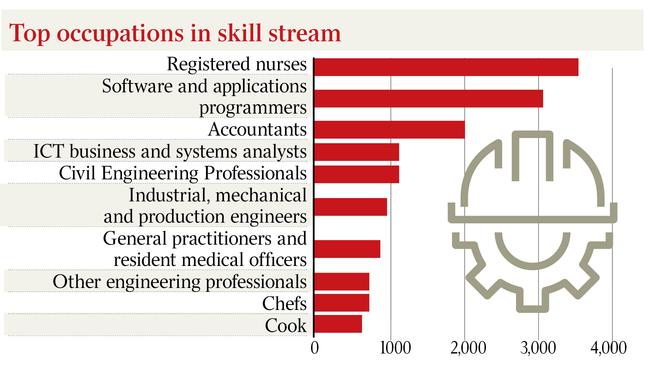
Of skilled migrants granted visas, nursing was the most popular vocation followed by software programmers and accountants.
Registered nurses were particularly in demand by states for placements in regional areas.
About 50,000 of the family stream visa holders, 65 per cent, were already in Australia, by far the highest proportion in the past decade. And 71 per cent of the skill stream permanent migrant visas were living here, again the highest proportion since 2010.
Covid-19 and the policies to mitigate it caused a shift in government policy on migration for the last financial year. It had operated a program that ensured two-thirds of permanent migration visas went to the skilled program, with one-third going to the family stream. For 2020-21, with international movement curtailed, this was changed to 50-50.
With almost 100,000 people waiting on a partner visa, the policy change allowed more than 30,000 of the backlog to be cleared, the report shows.
Deloitte Access Economics partner Chris Richardson said getting 160,000 through into the permanent migration program was managed despite a net overseas migration loss of 95,000 in the year to March.
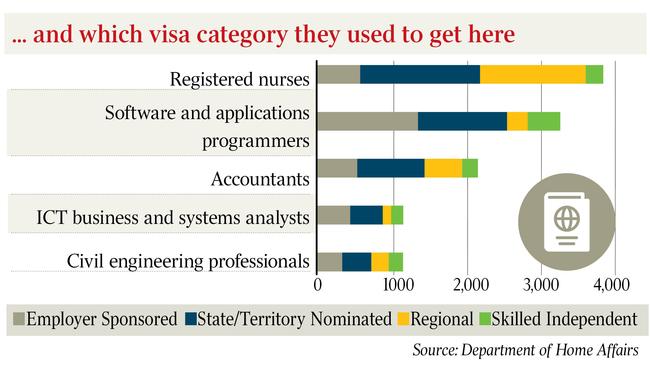
Missing out on those with high skill levels coming in from overseas would hurt the economy, he said. “They are young adults with high skills. They pay tax at higher rates, for longer, and our spend on them is lower in terms of health and other benefits. These are the people we don’t have coming into the economy.”
The report said the largest source of citizenship countries of migrants in the 2020-21 year was China with 22,207 places, followed by India with 21,791. The UK, The Philippines, Vietnam and the US followed.
India had the highest number of skilled migrants, with 15,462, and China second at 11,430.
Applicants were most likely to nominate NSW as their intended state of residence, followed by Victoria and Queensland.
Registered nurses topped the list of all categories that received a permanent skilled migration visa. There were 3670, with more than 1500 of them sponsored by state or territory governments looking to manage Covid-19. More than 1300 registered nurses were deployed into regional areas.
Ms Lambert, ACCI’s director of economics employment and skills, said those who said permanent skilled migration was stealing Australian jobs should note the high skill level and qualifications of those sponsored by employers. “No one is suggesting putting nurses into regional areas is taking anyone’s job – it is filling a demand,” she said.



